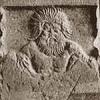Good info to be aware of...
Mule deer and access
Behaviour changes What it shows
Habitat selection by mule deer during migration: effects of landscape structure and natural-gas development, (Lendrum et al 2012)
Animals move faster through areas of roads, select habitat away from disturbance
Winter habitat selection of mule deer before and during development of a natural gas field (Sawyer et al, 2006)
Reduced/altered habitat use by mule deer out to 3km from site of disturbance
Migrating Mule Deer: Effects of Anthropogenic ally Altered Landscapes (Lendrum et al, 2013)
Development alters movement rate during migration, implications on arrival times, departure times, birthing areas, locomotion cost
Elk and access
Behavioural changes What it shows
Distribution of Mule Deer and Elk in Relation to Roads (Gregory, 1979)
Avoid areas of high road density and high traffic volume. Effect of Forest Roads and Habitat Use by Roosevelt Elk (Witmer 1985) Avoidance of 250, on either side of paved roads, 125m from forestry spur roads and no avoidance of roads closed to motor vehicles. Thresholds in landscape connectivity and mortality risks in response to growing road networks (Frair et al, 200Avoid 250m on either side of a road, animals lived in smaller herds to avoid detection, more tolerate of disturbance when appropriate cover is available.As road density increases elk avoid usage of habitat and increased displacement of elk occurs as they potentially seek more secure habitat. Effects of Roads on Elk: Implications for Management in Forested Ecosystmes (Rowland et al, 2005)
Why stress matters
Research Literature What it shows Condition, Survival, and Cause- Specific Mortality of Adult Female Mule Deer in North-Central New Mexico(Bender et al, 2007)
Mule deer with high fat and body condition scores had higher winter survival rates
Effect of Enhanced Nutrition on Mule Deer Population Rate of Change (Bishop et al, 2009)
Increased nutritional quality did not increase pregnancy but did increase winter survival and neonate survival. Relations between nutritional condition and survival of North American elk Cervus elaphus (Bender et al, 2006)
Showed increased risk of non-human caused mortality with reduced body fat and increased muscle metabolized.
Species have road density thresholds
Species Road density Literature
Large ungulates
0.6 km/km2 (apparent threshold value for naturally functioning landscape)
Ecological effects of roads: towards three summary indices an overview for north America. (Foreman et al, 1997) Moose 0.2-0.4 km/km2 apparentthreshold of moose in summer and winter respectively
Functional responses, seasonal variation and thresholds in behavioural responses of moose to road density (Hawthorne et al, 2013) Elk 1.0-1.5 km/km2 increasedhabitat avoidance and emigration of elk seeking secure habitat
Thresholds in landscape connectivity and mortality risks in response to growing road networks (Frairs et al, 200Standard for habitat effectivenessElk 1.9 km/km2 (Density
Wolves and access
Behavioral responses of wolves to roads: scale-dependent ambivalence (Zimmermann et al, 2014)
Wolves use roads to travel 2x as fast. Develop cryptic behaviour to utilize roads without increased visibility
How linear features alter predator movement and the functional response (McKenzie et al, 2012)
Wolves select for travel on seismic lines, increased rate of travel, increase encounter rate. Prey are at higher vulnerability when in areas of high density Caribou encounters with wolves increase near roads and trails: a time- to-event approach (Whittington et al, 2011)Risk of encounter greater around trails
Movement responses by wolves to industrial linear features and their effect on woodland Caribou in Northeastern Alberta. (Latham et al, 2011)
Concluded seismic lines increase wolf predation risk for caribou resulting in avoidance behaviour of caribou Faster and farther: wolf movement on linear features and implications of hunting behaviour (Dickie et al, 2016)
Wolves move up to 3x faster, farther, higher search rate associated with linear features.





 Reply With Quote
Reply With Quote